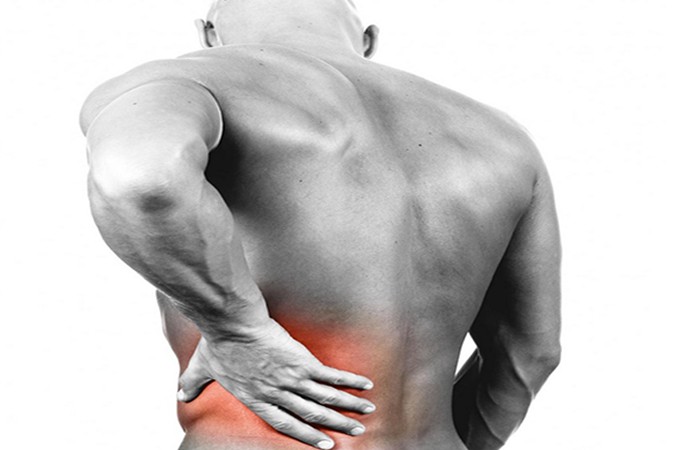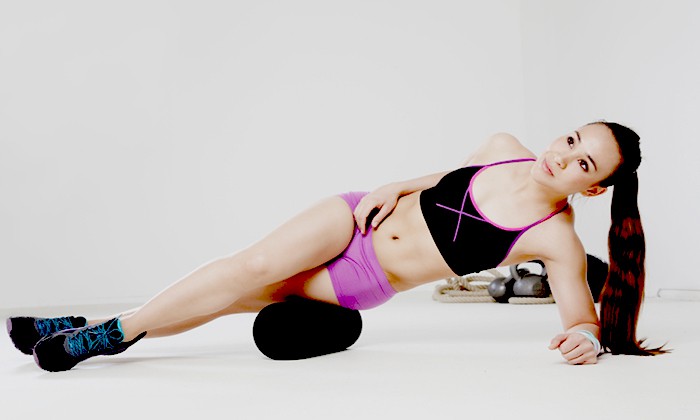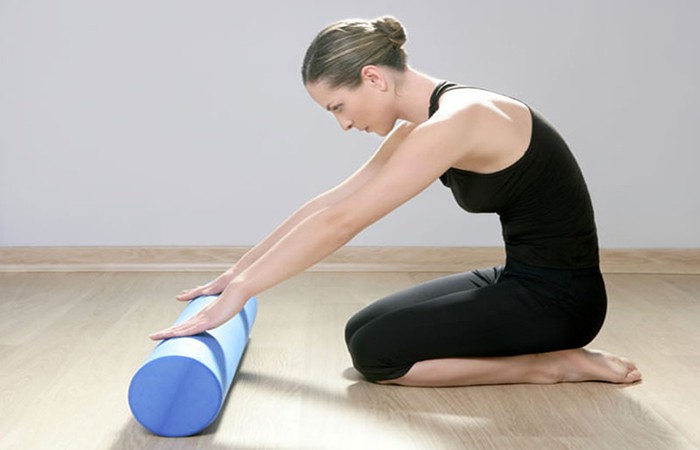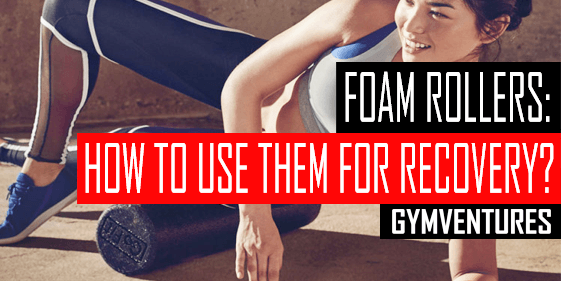What is Foam Rolling?
Foam rolling is the term people commonly use to describe a technique known as self-myofascial release. Myofascial release involves using soft tissue therapy to relax contracted muscles, improve circulation of the blood, and help with the stretch reflex in muscles.
Self-myofacial release simply means someone doing the therapy on themselves, usually with the help of a foam roller.
This method is used to help release tight muscles and trigger points via improving soft tissue extensibility; especially by professional athletes and physical therapists.
The way self-myofascial release is performed to achieve recovery is by rolling the foam roller under the desired muscle area until you hit a trigger point, which is simply a tender area of the muscle; once a trigger point is found, you maintain pressure on it for thirty to sixty seconds.
The method works for assisting in recovery of many muscle areas, such as: calf muscles, lats, buttocks, hip flexors, quads, hamstring, among others. It is usually performed using a foam roller, typically one around twelve inches in length, with longer foam rollers used for back muscles.
Related: How Many Days a Week Should You Do HIIT?
Where Can I Get a Foam Roller?
A simple Amazon search should do the trick and at the time of this article there are currently 1,471 results under the foam rollers category alone.
There are a good amount of foam roller manufacturers out on the market at the moment and choosing the best foam roller for you can certainly be a little overwhelming, especially at the start of your recovery journey.
It may be beneficial to search through some forums and read the Amazon ratings and reviews to help you decide. Most, if not all, are designed to get the job done. The better ones will be rated higher of course, which should help you in settling on one or more.
Related: 10 Best Foam Rollers for Muscle & Back Exercises
The Cause of Trigger Points and Tight Muscles

A great number of things combine in contributing to muscle tension and formation of knots in muscles, commonly referred to as trigger points. Things such as training, hydration, posture, flexibility, metabolic disorders, muscle tension, among other things.
Our bodies are evolved to take on a lot of beating we throw at them day in and day out, whether it be tough workouts, improper posture, rough hikes, among other things; but even they have a limit on as to how much they can take and are unable to recover in a timely manner. Which is where assistance with recovery comes in.
We all are in need of this assistance in recovery at one point or another, whether we perform it on ourselves or we seek professional assistance. Some of us tough it out and go through it without addressing it, and our body responds by recovering, because all else being equal it naturally wants to be health and strong!
However, though this may work if one has enough time on their hands, it is not the most efficient or effective method of approaching a healthy recovery and achieving optimal muscle health in a sound manner.
Do I Have Tight Muscles or Trigger Points?
If you’ve ever experience a scenario in which you apply pressure to one area of your body but feel pain in a different area and wondered why this was the case, there is a good chance you experienced hitting a trigger point.
Trigger points form in muscles in the form of knots and they send pain throughout the affected muscle area.
When foam rolling and hitting a trigger point, the pain initially felt will radiate up or down the muscle area being worked on.
Depending on how tight the muscle is and the pressure applied, it is typical to feel some discomfort, similar to the feeling of bending down to touch your toes and holding tight. The pain felt is temporary and should not be unbearable, as a matter of fact, it will feel much better afterward.
What If I Feel Pain?
Before jumping straight into it, it is best to consult and receive approval for self-myofascial release from your physical therapist and discuss any and all sharp pains with them. In most cases most doctors will swiftly encourage your efforts and approve of the practice.
Getting back as to why it hurts means taking a look at common practices personally sought by people all over the world.
If we take a look at treatments such as that of a deep tissue massage, we can easily comprehend that it entails some discomfort for the greater good of your body; and most people readily endure it.
Thus, self-myofascial release is similar except it gives you the control of the healing and recovery process of your muscles by letting you apply pressure to specific muscles in pain, so you have complete awareness and feeling of which areas are in pain and require extra attention.
What’s The Benefit Of All Of This?
Foam rolling, as mentioned, helps to release trigger points formed in muscles in the form on knots.
This tends to cause pain and immobility of the affected muscle, but foam rolling the affected muscle area helps regain natural pain free muscle movement patterns and ultimately recover as well as enhance your performance.
By breaking up the much dreaded muscle knots, you are resuming proper blood flow and muscle function. Thus with the help of your foam roller and the self-myofascial release process your body is being indemnified and on its road to full recovery; getting you back to 100% and once again ready to take on the world.
How Does Self-Myofascial Release Work?

If we ignore our muscles long enough and neglect to take proper care of them, we are susceptible to lose flexibility of the muscles, and incur pain and adhesion along the way.
This is obviously something we all want to avoid, however, life has a way of getting in the way of our plans, and so we must be ready to take matters into our own hands.
With self-myofascial release we perform deep compression on our muscles and by doing so we are breaking up and relaxing tight muscles along with adhesions formed around different muscle layers.
To avoid inflexibility, and most importantly pain, we have to make sure we keep our muscles tender and soft. Foam rolling helps us achieve this by returning normal blood flow and thereby helping our bodies restore their healthy tissue.
How Do I Know What to Foam Roll?
Figuring out on which muscle group to use your foam roller can be approached in numerous ways. One way to identify an area of focus, if you do not have a particular one at hand, is through screenings.
A screen is essentially a test to find out how well your muscle movement patterns are performing, what your mobility looks like as well as stability. If while performing a screen on a particular area you encounter difficulties, incorporating a foam roller and utilizing it for self-myofascial release may be a good approach to reaching recovery.
How Exactly Do I Do It?
Foam rolling properly involves applying mild pressure to the targeted muscle group by using the roller and your own body-weight. To roll the right way means rolling very slowly on the foam roller, no faster than about an inch per second.
While doing this, you want to focus on identifying an area of the muscle which is tight or painful, then pause on that particular point for typically thirty to sixty seconds and just loosen up as much as you can. If done properly you should notice and feel your muscle relax and release.
Depending on how tight the area is, the pain should decrease after about twenty to thirty seconds.
If you come to find that a particular area you are attempting to foam roll is just too painful, ease your way into it. Move the foam roller and apply the pressure to areas surrounding the one that is the most sensitive to pressure; slowly relaxing the entire area and reducing and relaxing the sensitivity of the original trigger point.
While foam rolling you need to keep in mind that your end goal here is to achieve recovery through restoring proper blood flow and loosening up the muscles, this is by no means a test of your pain tolerance.
If you find that your foam roller is tough to navigate, you can try using alternative objects to apply the pressure. Typically, among other objects, a tennis ball, a theracane, or even trigger point therapy kits can help immensely.
What Happens After Foam Rolling?

Moderate soreness on the following day is not uncommon and should be expected. Your muscles should be thanking you for releasing them from agony of trigger points, as they should feel as if they had been treated and loosened.
Be sure to not reach excessive soreness as this means you are overdoing it and not on the road to reaching optimal results. Be sure to stay well hydrated throughout the day, rest your muscles via sleep or relaxation, and don’t skip getting proper sleep. Stay away from junk food, and feed your body proper nutrients.
Additionally, before using the foam roller on the same area, it is best to wait a day or two and allow the blood to properly flow through.
Things to Avoid
You should never use the foam roller to roll your bone or a joint. Additionally one should avoid using the foam roller on their lower back area. For these areas smaller objects such as a tennis ball or something along the lines of a lacrosse ball tend to be a better choice.
It is also highly recommended to not mess with you neck area, these type of issues should be addressed by a trained medical professional. Even if you are a self-proclaimed expert foam roller, it is best to leave these highly sensitive areas to medical professionals.
Final Say on Foam Rolling
Using a foam roller to achieve proper muscle recovery via the method known as self-myofascial release is no longer a well-kept secret of the sports industry and the physical therapy professional.
Thanks to technological developments and spread of valuable information, it has finally entered into the realm of the everyday fitness world and is used by people from all walks of life at all fitness levels.
By utilizing the information listed above and performing additional research as needed, you should be well prepared to start using a foam roller can assist in reaching muscle tension recovery caused by trigger points.
Keep reading: Doing Crossfit at Home (Things You'll Need)


